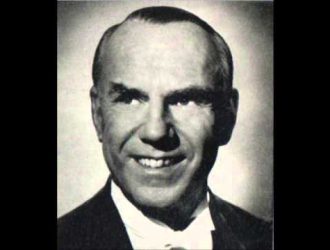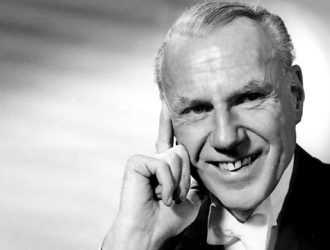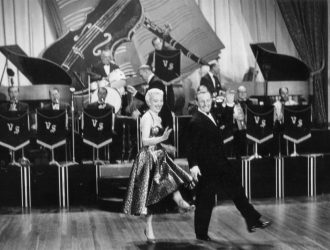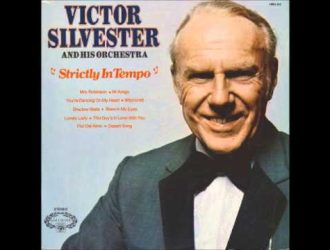Victor Silvester
Victor Marlborough Silvester was an English dancer, author, musician and bandleader from the British dance band era. He was a significant figure in the development of ballroom dance during the first half of the 20th century, and his records sold 75 million copies from the 1930s through to the 1980s.
Early life#
Silvester was born the second son of a vicar in Wembley, Middlesex. He was educated at Ardingly College, St. John’s School, Leatherhead and John Lyon School, Harrow, from all of which he absconded. In September 1916 he enlisted in the British Army during the First World War and served as a private in the Argyll and Sutherland Highlanders. He lied about his age to the recruiting authorities, stating this as 20 when in fact he was only 16. He took part in the Battle of Arras in April/May 1917, and also was a member of five execution squads, where deserters, some no doubt suffering from shell-shock, were shot.
Once his age was discovered, he was immediately withdrawn from the front and sent back to the military base at Etaples. After two weeks he was transferred to the First British Ambulance Unit For Italy. On 4 September 1917 at Sella di Dol near San Gabriele, while acting as a stretcher bearer to evacuate wounded Italian servicemen during a heavy bombardment by the Austrians and Germans, he was injured in the leg by a shell burst but refused medical treatment until the other wounded had been attended to. For his gallantry on this occasion he was awarded the Italian Bronze Medal of Military Valour in a decree by the Italian Minister of War dated 30 November 1917. In a letter to Silvester’s parents dated 20 September 1917, his Commandant in the First British Ambulance Unit, the noted historian G.M. Trevelyan, wrote: “He is certainly one who will be deservedly loved wherever he goes in life, and he is besides made of sterling stuff.”
After the war he studied at Worcester College, Oxford for a year. He decided to resume a military career when he was offered a place at the Royal Military College, Sandhurst, but he quickly decided it was not for him. He also studied music at Trinity College, London, having already had private piano lessons as a child.
Career in dance#
His interests had meanwhile turned to dancing. He was one of the first post-war English dancers to feature the full natural turn in the slow waltz. This innovation was a factor in his winning the first World Ballroom Dancing Championship in 1922 with Phyllis Clarke as his partner. He married Dorothy Newton a few days later.
He competed again in 1924, coming second to Maxwell Stewart – the inventor of the double reverse spin in the waltz – and Barbara Miles. He was a founding member of the Ballroom Committee of the Imperial Society of Teachers of Dancing which codified the theory and practice of Ballroom Dance – now known as the [international style standard|International Style]] – and published the first book embodying the new standards in 1927. This was Modern Ballroom Dancing, which became a best-seller and has remained in print through many editions, the last issued in 2005.
He went on to open a dancing academy in London, which eventually developed into a chain of 23 dance studios. By the early 1930s his teaching had become famous and he had taught some of the top celebrities of the day, among whom was Estelle Thompson, better known as Merle Oberon. Victor had his own BBC television show through the 1950s, called BBC Dancing Club, and was later the President of the Imperial Society of Teachers of Dancing.
Later life#
By 1958, when he published his autobiography, he was the most successful dance band leader in British musical history, and a major star on British radio and television. His BBC Television show Dancing Club lasted 17 years. He also presented a weekly request programme on the BBC Overseas Service (later World Service) which ran from 1948 to 1975. His obituary in The Times noted, “Turn on a radio in Famagusta, Cape Town or Peking and one would be likely to hear his music issuing from the speakers”.
He was the subject of This Is Your Life in 1957 when he was surprised by Eamonn Andrews at the BBC Television Theatre.
Victor Silvester was appointed an Officer of the Order of the British Empire in 1961. He died while on holiday in the south of France at the age of 78. The orchestra remained in existence under his son’s direction until the 1990s. Victor, his wife and son are memorialised at Golders Green Crematorium, London.
The Victor Silvester Archive – which includes his OBE and First World War medals and related original documents and correspondence, his many other accolades such as his four Carl Alan Awards for services to dancing and his BBC Radio Golden Microphone Award, the complete archive of programme sheets for his orchestra’s BBC broadcasts, platinum and silver discs for his orchestra’s record sales and the orchestra’s entire archive of original hand-scored strict tempo sheet music – was sold at auction in London in March 2000 and is now held in a private collection in Northern England.
Bibliography#
- Victor Silvester, Modern Ballroom Dancing, London: Herbert Jenkins, 1927 – many editions (about 60 in his lifetime). First edition included waltz, foxtrot, quickstep and tango, plus mention of blues, one-step, black bottom and paso doble. In the Second World War and after, there was some space given to such as samba, rumba, rhythm dance (a way for beginners to get round the ballroom) and “quick waltz” Viennese Waltz. Editions in the mid-1950s would have included the jive and Cha Cha Cha. By 1977, the book included the full set of ten dances used in international competitions, plus rock n’ roll and disco dance.
- Victor Silvester, Theory and Technique of Ballroom Dancing. London: Herbert Jenkins, 1932; 2nd ed 1933 and other editions.
- Victor Silvester (with foreword by Philip J. S. Richardson), The Art of the Ballroom. London: Herbert Jenkins, 1936.
- Victor Silvester, Old Time Dancing. Herbert Jenkins, London. 1949 and later editions.
- Victor Silvester Sequence Dancing. London: Herbert Jenkins, 1950, and later editions.
- Victor Silvester, Modern Dancers’ Handbook. London: Herbert Jenkins, 1954.
- Victor Silvester, c.1955. Victor Silvester’s Album.
- Victor Silvester, Dancing Is My Life: The Autobiography of Victor Silvester. London: Heinemann, 1958.
- Walter Whitman and Victor Silvester, The Complete Old Time Dancer. London: Herbert Jenkins, 1967.
- Victor Silvester, Modern Ballroom Dancing: History and Practice. London: Barrie and Jenkins, 1977.
- Victor Silvester, Old Time and Sequence Dancing. London: Barrie and Jenkins, 1980.





